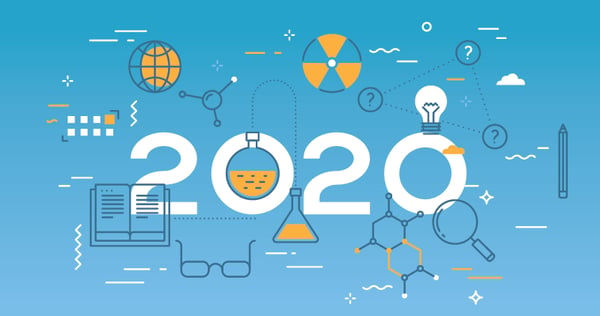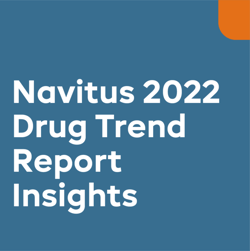Pharmaceutical manufacturers are constantly working to develop new and improved medications. Join us as we explore the non-specialty drugs you should be watching in 2020.

If you missed last week’s article about the most important upcoming specialty drugs, be sure to check it out here.
Approximately 40 new medications are approved by the Food and Drug Administration (FDA) every year.1 (Please note: If you’re curious about what it takes to develop a drug and bring it to market, check out our previous article). Why should you care about these new medications? Because they can affect both your organization’s pharmacy spend and your members’ cost share.
For non-specialty drugs, we will focus on medications that may come to market this year, including ones that are currently being reviewed by the FDA, or that are in the last clinical trial (Phase III) stage.
PEANUT ALLERGY
Peanut allergy is one of the most common food allergies in the United States and is especially prevalent in children, affecting over a million American children. The first treatment for peanut allergy, Palforzia (Arachis hypogaea allergen powder) was approved by the FDA in January, with a second product currently under review. These products represent the first treatments for food allergies and while they do not cure allergies or eliminate allergic reactions, they are able to help limit serious allergic reactions.
- Palforzia is an oral immunotherapy drug that desensitizes patients, 4 to 17 years old, to peanut protein, decreasing the risk of a dangerous allergic reaction from accidental exposure.2 This drug has the potential of coming to market as a specialty medication.
- Viaskin Peanut is a topical immunotherapy patch for patients 4 to 11 years old that similarly desensitizes patients to peanut protein. It is currently under review, with a decision expected in August 2020.
INFLUENZA
Influenza (flu) is a respiratory disease that can cause mild to severe illness. It is caused by a range of influenza viruses and poses a higher risk of complications in people over 65, young children and pregnant women.3
- Xofluza® (baloxavir) is a single-dose, antiviral drug that was approved for uncomplicated flu in 2018, with an expanded approval for use by high-risk flu patients in late 2019.4 It provides another option against flu virus strains that may be resistant to existing antiviral drugs.
- Pimodivir is another new treatment for high-risk patients. Pimodivir can be effective both by itself and when used with oseltamivir, an antiviral flu drug. The manufacturer of pimodivir may file for FDA approval in 2020.
- M-001 is a multi-season, multi-strain universal flu vaccine that is in the final phase of clinical trials. It works with existing flu vaccines and can be used for current and future flu strains, as well as both seasonal and pandemic influenza. It is currently in Phase III studies, with results anticipated this year.
DIABETES
Diabetes is a chronic condition where the body makes too little or no insulin, leading to high blood sugar. The three types of diabetes include: type 1 diabetes, which typically affects younger people; type 2 diabetes, which typically affects adults; and gestational diabetes, which affects pregnant women.
- An authorized generic for NovoLog®, a common insulin injection for controlling diabetes, became available from Novo Nordisk on January 2, 2020.
- A second insulin glargine follow-on competitor to Lantus®, which is used to treat both type 1 and type 2 diabetes, may be approved in March 2020.
- Rybelsus® (oral semaglutide) is an oral alternative to subcutaneously-injected semaglutide, which is used for adults with type 2 diabetes. It was approved by the FDA in September 2019.
- Gvoke™ (glucagon auto-injector) and Baqsimi™ (nasal glucagon) are newly approved treatments for hypoglycemia, a condition caused by low blood sugar that is often associated with diabetes treatment. Both products provide additional convenient administration options for glucagon.
NON-SPECIALTY GENERICS
Generic medications are clinically equivalent to brand medications and can often make existing treatments available at a lower price. Some key generic products that may potentially be available in 2020 include:
- Saphris® (asenapine) for bipolar disorder and schizophrenia.
- Dulera® (formoterol/mometasone) for asthma.
- Restasis® (cyclosporine ophthalmic emulsion) for dry eye disease.
- Ciprodex (ciprofloxacin/dexamethasone otic suspension) for ear infections.
New medications can have a significant impact on your organization’s pharmacy spend and your members’ cost share. Keeping abreast of new launches and significant drugs in the pipeline can help you plan ahead and reduce the impact to your organization.
- FDA Approves Drugs Faster Than Ever But Relies On Weaker Evidence, Researchers Find. NPR. https://www.npr.org/sections/health-shots/2020/01/14/796227083/fda-approves-drugs-faster-than-ever-but-relies-on-weaker-evidence-researchers-fi. Published January 14, 2020. Accessed January 17, 2020.
- Allergists Debate Anticipated FDA Approval Of A Peanut Allergy Drug. NPR. https://www.npr.org/sections/health-shots/2019/09/23/763394019/allergists-debate-anticipated-fda-approval-of-a-peanut-allergy-drug. Published September 23, 2019. Accessed January 3, 2020.
- People at High Risk For Flu Complications. CDC.gov. https://www.cdc.gov/flu/highrisk/index.htm. Updated August 27, 2018. Accessed January 22, 2020.
- Influenza Antiviral Drug Baloxavir Marboxil. CDC.gov. https://www.cdc.gov/flu/treatment/baloxavir-marboxil.htm. Updated November 18, 2019. Accessed January 22, 2020.




